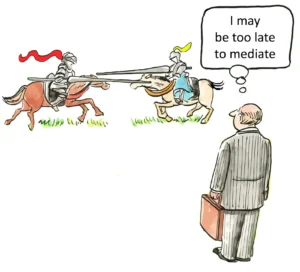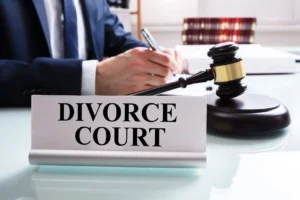Criminal Profiling in Court: Admissibility and Expert Testimony
The intersection of criminal profiling and judicial proceedings represents one of the most contentious battlegrounds in modern criminal justice. When prosecutors seek to introduce expert testimony regarding offender characteristics derived from crime scene analysis, they enter a legal minefield fraught with evidentiary challenges and constitutional considerations. The admissibility of such evidence—and the qualifications of those who present it—raises fundamental questions about fairness, reliability, and the proper boundaries of scientific evidence in criminal trials.
At its core, criminal profiling attempts to infer characteristics of an unknown offender based on evidence left at crime scenes and behavioral patterns exhibited during the commission of the offense. This investigative technique, popularized by the FBI’s Behavioral Analysis Unit, has captured public imagination through countless television shows and films. Yet its transition from investigative tool to courtroom evidence has proven far more problematic than Hollywood portrayals suggest. The standards governing the admissibility of expert testimony in this domain vary significantly across jurisdictions, creating a patchwork of precedents that reflect deeper tensions in our legal system’s approach to novel forms of evidence.
The conservative tradition in American jurisprudence has long emphasized procedural safeguards against unreliable evidence, particularly when liberty interests are at stake. This perspective recognizes that while the pursuit of truth is paramount, that pursuit must occur within established frameworks that protect defendants from speculative or prejudicial assertions masquerading as expertise. The question of whether criminal profiling meets these standards—whether it constitutes genuine expertise or merely educated guesswork—lies at the heart of ongoing legal debates about its proper role in criminal proceedings.
The Evolution of Criminal Profiling as an Investigative Tool
Criminal profiling emerged in the mid-20th century as law enforcement agencies sought more sophisticated methods to identify perpetrators of violent crimes. The technique involves analyzing crime scene evidence, victim information, and offender behavior to develop inferences about the perpetrator’s characteristics and motivations. Early practitioners like John Douglas and Robert Ressler at the FBI’s Behavioral Science Unit pioneered approaches that combined psychological principles with practical investigative experience.
The methodology typically begins with a thorough crime scene analysis, examining physical evidence and behavioral indicators to understand the nature of the offense. This is followed by victimology—a comprehensive study of victim characteristics and lifestyle that might reveal patterns in offender selection. Profilers then analyze specific actions taken by the offender before, during, and after the crime, looking for signature elements that might distinguish the perpetrator’s psychological needs from the functional requirements of the crime itself.
From these analyses, profilers generate hypotheses about the offender’s likely demographic characteristics, personality traits, and background. These might include age range, gender, occupation, relationship status, and criminal history. The resulting profile serves primarily as an investigative tool, helping detectives prioritize suspects and develop interview strategies. Importantly, traditional profiling was never intended to identify specific individuals or serve as standalone evidence of guilt—distinctions that become crucial when considering its admissibility in court.
Legal Standards Governing Expert Testimony
The admissibility of expert testimony in federal courts is governed primarily by Rule 702 of the Federal Rules of Evidence, which codified and expanded upon the Supreme Court’s landmark decisions in Daubert v. Merrell Dow Pharmaceuticals and Kumho Tire Co. v. Carmichael. These rulings fundamentally altered the landscape for scientific and technical evidence, replacing the earlier “general acceptance” standard established in Frye v. United States with a more rigorous judicial gatekeeping function.
Under the Daubert standard, judges must ensure that expert testimony is both relevant and reliable before permitting its admission. The Court outlined several non-exclusive factors for assessing reliability: whether the expert’s technique or theory can be tested; whether it has been subject to peer review and publication; the known or potential error rate; the existence of standards controlling the technique’s operation; and whether the methodology has gained general acceptance within the relevant scientific community.
The Kumho Tire decision subsequently clarified that these gatekeeping obligations apply to all expert testimony, not merely scientific evidence in the strictest sense. This expansion proved particularly significant for criminal profiling, which occupies an ambiguous position between science, technical knowledge, and specialized experience. The ruling acknowledged that the specific factors identified in Daubert might be inapplicable in some contexts, granting judges considerable latitude in assessing reliability according to the particular circumstances of each case.
While federal courts and many states have adopted this framework, other jurisdictions continue to apply the Frye standard, which focuses more narrowly on whether the underlying methodology has gained “general acceptance” in the relevant field. This divergence in standards creates significant variation in how courts approach profiling evidence, with some jurisdictions proving more receptive than others to its admission.
Criminal Profiling Under Evidentiary Scrutiny
When subjected to the rigorous standards established in Daubert and its progeny, criminal profiling encounters several significant challenges. Perhaps most fundamentally, the technique’s scientific validity remains contested within both academic and professional communities. Unlike DNA analysis or fingerprint identification, profiling lacks standardized methodologies and clearly established error rates—factors that courts increasingly demand when evaluating expert testimony.
The empirical foundation for many profiling assertions appears particularly problematic under judicial scrutiny. While proponents point to anecdotal successes and the technique’s widespread adoption by law enforcement agencies, skeptics note the relative scarcity of controlled studies validating profilers’ accuracy. The few existing studies have yielded mixed results, with some suggesting that experienced profilers perform only marginally better than non-experts when predicting offender characteristics from crime scene evidence.
Courts have proven especially wary of profiling testimony that purports to match a defendant’s characteristics to a generalized offender profile. Such evidence raises serious concerns about unfair prejudice, particularly when profiles incorporate demographic factors like age, gender, or socioeconomic background. Judges rightfully question whether such comparisons invite jurors to convict based on perceived similarities to a “typical” offender rather than specific evidence linking the defendant to the crime in question.
Distinctions in Types of Profiling Evidence
Not all forms of criminal profiling face identical evidentiary challenges. Courts have drawn important distinctions between different applications of profiling methodology, with some proving more admissible than others. Understanding these distinctions is essential for practitioners navigating this complex evidentiary landscape.
Linkage analysis, which attempts to connect multiple crimes to a single perpetrator based on behavioral similarities, has gained limited acceptance in some jurisdictions. When presented by qualified experts who can articulate specific behavioral patterns across crime scenes, such testimony may survive Daubert challenges, particularly if the analysis focuses on distinctive signature aspects rather than common modus operandi elements. However, even this application faces significant scrutiny regarding its reliability and potential for prejudice.
Motivational analysis, which seeks to explain the psychological drives behind particular criminal behaviors, occupies a more tenuous position. Courts have sometimes permitted such testimony for limited purposes, such as explaining counterintuitive victim behaviors or unusual crime scene characteristics. However, judges typically exclude broader assertions about an unknown perpetrator’s likely motivations or personality traits, viewing such testimony as speculative and potentially misleading to jurors.
Most problematic are attempts to introduce “profile evidence” suggesting that a defendant’s characteristics match those typically associated with perpetrators of similar crimes. Courts have overwhelmingly rejected such evidence when offered by the prosecution, recognizing its potential to substitute stereotyping for individualized proof of guilt. The same concerns arise with “syndrome evidence” that attempts to establish guilt by comparing a defendant’s behavior to patterns allegedly common among certain types of offenders.
Qualifications of Profiling Experts
The question of who qualifies as an expert witness in criminal profiling further complicates admissibility determinations. Unlike established forensic disciplines with standardized training and certification requirements, profiling lacks uniform professional standards or credentialing processes. This absence creates significant variation in practitioners’ backgrounds, methodologies, and theoretical orientations.
FBI-trained profilers typically possess extensive investigative experience combined with specialized training in behavioral analysis. Their approach emphasizes practical crime-solving applications rather than purely academic theory, drawing on the Bureau’s extensive case files and institutional knowledge. While courts often recognize their practical expertise, questions may arise about the scientific basis for their methodologies and the transferability of their experience to the specific case at hand.
Academic experts in forensic psychology or criminology bring different strengths and limitations to profiling testimony. Their grounding in peer-reviewed research and statistical methods may satisfy certain Daubert factors, particularly regarding testability and error rates. However, judges sometimes question whether their theoretical knowledge translates effectively to real-world investigative contexts, especially when academics lack direct experience with criminal investigations.
The most persuasive expert witnesses often combine elements of both approaches—practical investigative experience informed by rigorous methodological training. Regardless of background, experts must demonstrate that their opinions derive from reliable principles applied appropriately to the facts of the specific case, rather than subjective impressions or generalized assumptions about criminal behavior.
Prosecution Applications and Limitations
Prosecutors seeking to introduce criminal profiling evidence must navigate carefully defined parameters regarding its permissible uses. Most successfully admitted profiling testimony serves educational rather than identificatory purposes—helping jurors understand unusual crime scene characteristics or behavioral patterns without directly implicating the defendant.
For example, courts have sometimes permitted qualified experts to testify about signature aspects of certain types of crimes, such as distinctive staging behaviors in sexual homicides or symbolic elements in arson cases. Such testimony can provide context for understanding evidence that might otherwise appear confusing or counterintuitive to jurors unfamiliar with particular criminal behaviors.
Similarly, experts may be permitted to explain apparent inconsistencies in crime scene evidence or victim testimony that might otherwise undermine the prosecution’s case. This application proves particularly valuable in cases involving traumatized victims whose behaviors might seem counterintuitive without proper context, such as delayed reporting or continued contact with perpetrators.
However, prosecutors face nearly insurmountable barriers when attempting to introduce evidence directly comparing a defendant to a generalized offender profile. Courts consistently reject such comparisons as improper character evidence that invites conviction based on perceived personality traits rather than actual conduct related to the charged offense. This limitation reflects fundamental concerns about fairness and individualized justice that transcend technical evidentiary rules.
Defense Applications and Strategy
While prosecutors face significant constraints in utilizing criminal profiling, defense attorneys sometimes find strategic advantages in introducing such evidence. When properly qualified experts identify discrepancies between crime scene characteristics and a defendant’s known behaviors or capabilities, such testimony can create reasonable doubt about the prosecution’s theory of the case.
Defense experts may analyze crime scene evidence to demonstrate that the behavioral patterns exhibited are inconsistent with the defendant’s psychological profile, physical capabilities, or established modus operandi in previous offenses. Such testimony essentially inverts traditional profiling methodology, using behavioral analysis to exclude rather than implicate potential suspects.
In cases involving false confessions or disputed statements, behavioral analysis experts may testify about psychological factors that increase susceptibility to suggestion during interrogation. While not profiling in the strictest sense, such testimony employs related psychological principles to contextualize evidence that might otherwise appear damning to jurors unfamiliar with interrogation dynamics.
Defense attorneys must remain mindful, however, that introducing profiling evidence may open doors for prosecution rebuttal that would otherwise remain closed. Strategic decisions about whether to challenge the prosecution’s case through profiling expertise require careful consideration of potential vulnerabilities and the specific evidentiary rules governing rebuttal evidence in the relevant jurisdiction.
Judicial Approaches to Profiling Evidence
Judicial responses to criminal profiling evidence reveal significant variation across jurisdictions and individual judges. This inconsistency stems partly from differing evidentiary standards, but also reflects judges’ varying comfort levels with behavioral science and their individual assessments of potential prejudicial impact.
Some judges adopt a categorically skeptical approach, viewing profiling as inherently speculative and insufficiently grounded in scientific methodology to satisfy Daubert requirements. These judges typically exclude profiling testimony entirely or severely restrict its scope, limiting experts to narrowly educational functions that avoid direct implications regarding the defendant’s guilt or innocence.
Other judges apply more nuanced, context-specific analyses that consider the particular type of profiling evidence offered and its relationship to other evidence in the case. These judges may permit carefully circumscribed testimony about behavioral patterns while excluding broader assertions about offender characteristics or motivations. Their gatekeeping focuses less on categorical judgments about profiling as a discipline and more on the specific reliability of the principles and methods applied in the case at hand.
A minority approach grants qualified profiling experts considerable latitude, particularly when their testimony relates to unusual or specialized criminal behaviors beyond typical juror knowledge. These judges emphasize the educational value of such testimony in helping jurors understand complex behavioral evidence, while relying on cross-examination and contrary expert testimony to expose potential weaknesses.
Cross-Examination Strategies for Profiling Experts
Effective cross-examination of profiling experts requires thorough preparation and strategic focus on specific vulnerabilities in the expert’s methodology, qualifications, and conclusions. Attorneys challenging such testimony should explore several key areas that frequently yield productive lines of questioning.
The empirical basis for the expert’s assertions often presents a primary target for cross-examination. Questions about validation studies, error rates, and the specific research supporting particular behavioral inferences can reveal significant limitations in the scientific foundation for profiling conclusions. Many profiling assertions rest on experiential rather than experimental foundations, a distinction that effective cross-examination can highlight for jurors.
Similarly, questioning should explore the expert’s methodology in the specific case, probing how they selected, weighted, and interpreted various behavioral indicators. Profiling inevitably involves subjective judgments about which crime scene elements hold significance and what inferences those elements support. Exposing the subjective aspects of this process can diminish the apparent scientific certainty of the expert’s conclusions.
Alternative explanations for behavioral evidence provide another productive avenue for cross-examination. Skilled questioning can demonstrate that crime scene characteristics might support multiple interpretations beyond those advanced by the profiling expert. This approach undermines claims of specificity or uniqueness in behavioral patterns that form the basis for many profiling conclusions.
Ethical Considerations in Profiling Testimony
Beyond legal admissibility, criminal profiling raises significant ethical questions for both the experts who provide such testimony and the attorneys who present it. These ethical dimensions deserve careful consideration independent of technical evidentiary requirements.
Profiling experts bear responsibility for clearly communicating the limitations of their methodology and the tentative nature of their conclusions. Ethical practice requires distinguishing between well-established behavioral principles and more speculative inferences, particularly when testimony might influence life-altering determinations of criminal liability. Experts should resist pressure to express greater certainty than their methodology warrants, even when doing so might weaken their testimony’s apparent impact.
Attorneys face corresponding ethical obligations when presenting profiling evidence. Prosecutors must ensure that such testimony serves legitimate truth-seeking functions rather than merely exploiting juror fears or biases. Defense attorneys must likewise avoid presenting profiling theories that lack substantial scientific support merely because they benefit their clients’ positions.
Both sides should consider the potential for profiling evidence to reinforce harmful stereotypes about particular demographic groups, especially when profiles incorporate characteristics like race, ethnicity, or socioeconomic status. Even when legally admissible, testimony that risks stigmatizing entire communities based on the actions of individual offenders raises serious ethical concerns that transcend technical evidentiary rules.
Future Directions in Profiling Admissibility
The evidentiary landscape for criminal profiling continues to evolve as courts grapple with advances in behavioral science and changing perspectives on expert testimony. Several emerging trends suggest possible future directions for profiling admissibility.
Increasing emphasis on empirical validation appears likely to shape future judicial approaches to profiling evidence. As courts become more sophisticated in applying Daubert principles to behavioral sciences, they will likely demand stronger empirical support for profiling assertions, particularly those that purport to identify distinctive patterns or predict offender characteristics with significant specificity.
Technological developments may also influence profiling admissibility by providing more objective measures of behavioral patterns. Advanced data analytics applied to large crime databases offer potential for identifying behavioral correlations with greater statistical rigor than traditional experience-based profiling. If such approaches demonstrate improved reliability and validity, courts may become more receptive to appropriately limited profiling testimony.
Simultaneously, growing awareness of cognitive biases in expert judgment may prompt greater judicial skepticism toward subjective aspects of profiling methodology. Research on confirmation bias, contextual bias, and other cognitive distortions has highlighted how experts’ prior expectations can influence their interpretation of ambiguous evidence—concerns particularly relevant to profiling, which inevitably involves subjective judgment in interpreting behavioral indicators.
Practical Guidance for Legal Practitioners
Attorneys navigating the complex terrain of criminal profiling evidence can benefit from several practical considerations that transcend specific jurisdictional rules. These guidelines apply whether seeking to introduce such evidence or challenge its admission.
First, practitioners should carefully distinguish between different applications of profiling methodology, recognizing that courts treat various forms of behavioral analysis differently. Educational testimony about general behavioral patterns typically faces fewer admissibility challenges than evidence directly comparing defendants to offender profiles or linking multiple crimes to a single perpetrator.
Second, expert selection deserves careful attention, with emphasis on finding witnesses whose qualifications align with the specific type of profiling evidence sought. An expert with strong academic credentials might best present testimony about research-based behavioral patterns, while a witness with extensive investigative experience might more effectively address crime scene analysis or offender methodology.
Third, pretrial preparation should include thorough exploration of the empirical support for specific profiling assertions. Attorneys should work closely with experts to identify the strongest scientific foundation for necessary testimony while avoiding more speculative claims that might jeopardize admissibility under Daubert scrutiny.
Finally, practitioners should anticipate and prepare for the most likely challenges to their profiling evidence, developing responsive arguments that address reliability concerns without overstating the certainty of behavioral inferences. This balanced approach acknowledges legitimate limitations while emphasizing the genuine value that properly qualified behavioral analysis can provide to factfinders.
The Broader Implications of Profiling Jurisprudence
The legal treatment of criminal profiling reflects broader tensions within our justice system regarding the proper role of specialized knowledge in criminal adjudication. These tensions extend beyond profiling itself to fundamental questions about how courts should evaluate novel forms of expertise.
One persistent tension involves balancing scientific rigor against practical utility. Strict application of Daubert standards might exclude behavioral insights that, while difficult to validate experimentally, nonetheless reflect genuine expertise developed through extensive professional experience. Courts continue to struggle with determining when practical knowledge should yield to demands for empirical validation, particularly in domains where controlled experimentation presents ethical or practical challenges.
Similarly, profiling jurisprudence highlights ongoing debates about the proper allocation of decision-making authority between judges and juries. The gatekeeping function established in Daubert reflects concerns that jurors might give undue weight to seemingly scientific testimony, particularly when presented by impressive credentials. Yet this approach potentially limits jurors’ exposure to relevant information that, while imperfect, might assist their truth-seeking function when properly contextualized.
Perhaps most fundamentally, debates about profiling admissibility reflect competing conceptions of fairness in criminal proceedings. Those favoring stricter admissibility standards emphasize protecting defendants from potentially prejudicial pseudo-science, while those advocating greater flexibility highlight victims’ interests in having courts consider all potentially relevant evidence. This tension between procedural and substantive justice permeates not only profiling jurisprudence but criminal procedure more broadly.
Conclusion
The admissibility of criminal profiling in court proceedings represents a microcosm of larger challenges facing our legal system as it confronts increasingly specialized forms of knowledge. Neither blanket acceptance nor categorical rejection serves the interests of justice. Instead, courts must continue developing nuanced approaches that distinguish between different applications of profiling methodology, recognize both its potential value and limitations, and ensure that its use remains consistent with fundamental principles of fairness and reliability.
For legal practitioners, navigating this complex landscape requires careful attention to evolving standards across jurisdictions, strategic selection and preparation of expert witnesses, and thoughtful consideration of how profiling evidence relates to the broader narrative of each case. By approaching profiling with appropriate caution and sophistication, attorneys can help ensure that behavioral insights inform rather than distort the truth-seeking function of criminal proceedings.
Ultimately, the proper role of criminal profiling in courtroom settings depends not only on its scientific validity but also on our collective judgment about the appropriate balance between thorough investigation and procedural fairness. As behavioral science continues advancing our understanding of criminal conduct, the legal system must remain vigilant in distinguishing genuine expertise from mere speculation while ensuring that valuable insights are not categorically excluded from consideration. This balanced approach best serves the dual imperatives of truth and justice that form the foundation of our criminal legal system.
Citations:
- Criminal Investigative Analysis in Courts
- Criminal Profiling as Expert Evidence
- Racial Profiling vs Criminal Profiling
- Daubert vs Frye Admissibility Standards
- Criminal Justice Research Topics
- FBI Profilers Accuracy Questioned
- GGU Law Theses on Profiling
- SEO for Criminal Defense
- Criminal Profiling in Legal Investigations
- SEO Strategies for Criminal Defense
- Criminal Justice Research Paper
- DiVA Portal on Criminal Profiling
- Urban Law Journal Article
- Chicago Journal on Forensic Reports
- Adjudication of Expert Witness Testimony
- Criminal Defense Attorney Keywords
- SEO for Criminal Defense Lawyers
- ScienceDirect on Criminal Profiling
- Admissibility of Forensic Reports
- PMC Article on Criminal Justice
- Daubert Standards in Detail
- Profile Evidence in Criminal Trials
- PubMed Study on Profiling
- ACLU Court Cases on Racial Profiling
- Daubert and Kumho Decisions
- Expert Witnesses in Criminal Defense
- ACLU on Racial Profiling Issues
- Daubert Standard Legal Definition
- Expert Testimony Benchbook
- ABA Criminal Justice Magazine
- Justia Criminal Law Sitemap
- Criminal Justice Research Topics Guide
- Hot Topics in Criminal Justice
- Criminal Justice Topics by EssayPro
- Criminal Investigative Analysis in Courts
- ScienceDirect on Criminal Profiling
- Issues with Expert Witness Testimony
- Criminal Justice Topics by EssayService
- Expert Witnesses in High Profile Trials
- Criminal Profiling at UAGC
- Issues Article by Berger
- ScienceDirect on Forensic Psychology
- OJP Report on Criminal Justice
- ScienceDirect on Criminal Justice
- Alliant Catalog on Criminal Justice
- Kim Kardashian Paris Theft Trial
- Criminal Justice Terms Glossary
- SEO for Criminal Defense Lawyers
- Sudan Darfur Attacks by CBS
- Expert Testimony on Ambiguity
- Wikipedia on Offender Profiling
- SEO for Criminal Defense Firms
- Criminal Profile Evidence Document
- Admissibility of Expert Testimony Chart
- Expert Testimony for E-Discovery
- Credibility Tips for Expert Witnesses




















